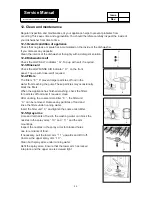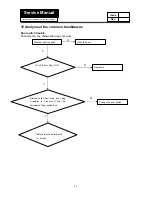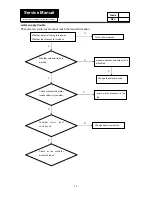
18
Service Manual
Model No: DW12-PFE2-E/DW12-PFE2-U/DW12-PFE2ME-U
Issue
Rev.
8. Loading the dishwasher
Before placing the dishes in the dishwasher, remove larger food particles to prevent the filter from
becoming clogged, which results in reduced performance.
If the pots and pans have baked-on food that is extremely hard to remove, we recommend that
they are soaked before washed. This will eliminate the need for extra wash cycles.
Pull out the rack to load the dishwasher.
8-1.How to use the lower rack
We recommend that you place the most difficult
to clean items on the bottom rack: pots, pans, lids,
serving dishes and bowls, as shown in the figure to the right.
It is preferable to place serving dishes and lids on the sides of the
racks in order to avoid blocking the rotation of the top spray arm.
Pots, serving bowls, etc. must always be placed face down (see fig.C)
Deep pots should be slanted to allow the water to flow out..
The silverware basket can be doubled (see fig.D) so that
only one section may be used when the silverware load is
light. This also makes space for additional pots and pans
and it can also be placed in the upper rack.
Silverware should be placed in the silverware basket with
the handles at the bottom; if the rack has side baskets, the
spoons should be located individually into the appropriate
slots. Especially long utensils should be placed in the horizontal
position at the front of the upper rack.
8-2.How to use the upper rack
The upper rack is designed to hold more delicate and lighter
dishware, such as glasses, cups and saucers, plates, small
bowls and shallow pans (as long as they are not too dirty).
Position the dishes and cookware so that they do not get
moved by the spray of water.
Normal daily load
Warning
:
knives and other utensils with sharp points must be loaded in the basket with their
points down or placed in a horizontal position.
fig.C
Ⅰ
Ⅱ
Ⅲ
Ⅳ
fig.D
















































